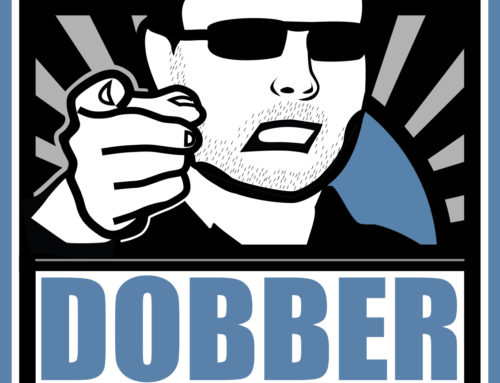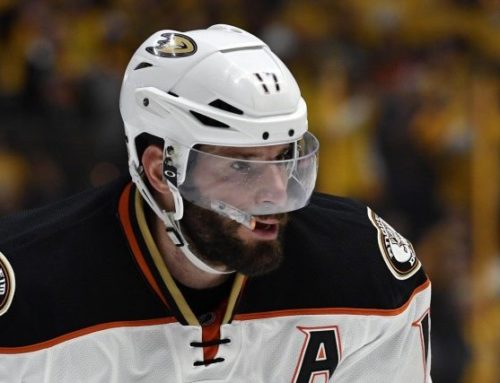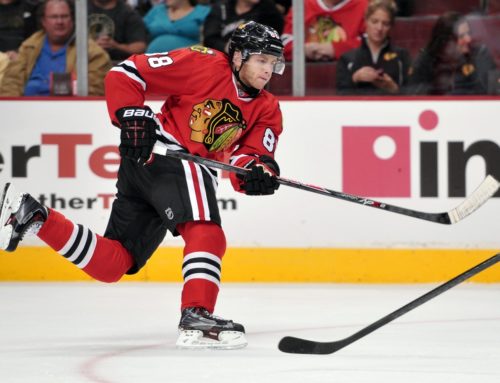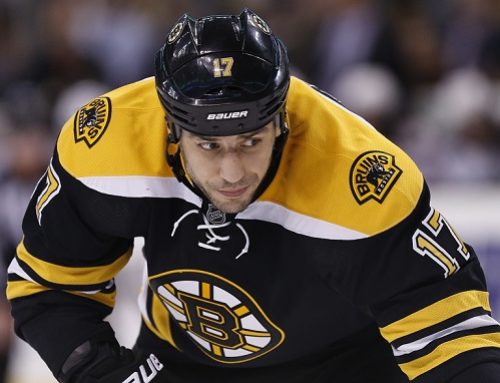
Both Rick Nash and Eric Staal are top-end talents with the ability to provide poolies with elite rotisserie production. We have seen big season’s from both players; multiple 40-goal seasons from Nash and a 100-point season from Staal. While neither may ever be point-per-game players in the future, 70-points with the solid peripherals label both of these players as accountable fantasy providers. But do their massive contracts make them obsolete in a salary cap league?
Even if they don’t hit their upside each year, one can justify owning Crosby, Malkin or Ovechkin based on what they could potentially do. Getting that high end production in the right year can be the difference between a top finish and winning your pool. These players have proven that they can produce points without any help from their teammates and their peripherals are among the best as well. Both Nash and Staal are big, talented players with the potential to carry their team on any given night, but lack the upside and ability of the aforementioned "Big Three."
Below, I take a look at their scoring statistics over a five year period and compare them to the three highest payed players in the NHL. This will put some perspective on their value, and if they can be considered efficient point-producers in a cap league. It’s important to note that any season under 65 games played considers pace, and the five year average includes this year’s pace as well.
|
Player |
Cost per goal avg |
Cost per assist avg |
Cost per point avg |
|
Eric Staal |
$261,075 |
$206,250 |
$115,223 |
|
Rick Nash |
$229,411 |
$203,125 |
$115,727 |
|
Alex Ovechkin |
$201,233 |
$194,662 |
$98,946 |
|
Sidney Crosby |
$214,546 |
$120,498 |
$74,870 |
|
Evgeni Malkin |
$248,571 |
$151,567 |
$94,155 |
These statistics represent the fact that even with the savings you get, each member of the big three is more cost effective than both Staal and Nash, considering a five year average. Take into consideration, though, that Ovechkin’s averages are padded by three very productive seasons from 2007-2010. If we were to average out his past two full seasons, those numbers would be a lot closer.
|
Player |
Cost per goal avg |
Cost per assist avg |
Cost per point avg |
|
Eric Staal |
$308,988 |
$204,714 |
$123,134 |
|
Rick Nash |
$245,901 |
$241,486 |
$123,809
📢 advertisement:
|
|
Alex Ovechkin |
$247,110 |
$198,717 |
$110,143 |
Despite Ovechkin’s 50-goal, 109-point season in 2009-10, his cap hit of nearly $2 million more than what Staal and Nash make, combined with his totals from 2010-11 and current pace make a negative impact on his cost efficiency. If Staal and Nash weren’t both currently mired in terrible seasons themselves, their cost/production ratio would be comparable to Ovechkin’s, even as 70-point players.
The argument arises, with Ovechkin’s decline in production, that both Staal and Nash are more effective salary cap players, but does Ovechkin’s upside negate this claim? That would depend on your view of Ovechkin’s ability to rebound from his recent uninspired play. I, myself, would happily play Nash or Staal over him if it meant getting other more effective players into my lineup. Creating $2 million in space by trading away, or passing on Ovechkin for other cap-friendly players is probably a smart move at this point, but a resurgent Ovechkin could leave me with ostrich-sized egg on my face.
The bonus to Rick Nash and Eric Staal doesn’t come only in the form of monetary savings. Both players are big, physical players who love to shoot and see team-leading amounts of time on the power play. The table below will compare their peripheral statistics to those of the big three to see how they match up with the best of the best over the past five seasons.
|
Player |
Cost per SOG avg |
Cost per PPP avg |
Cost per PIM avg |
|
Eric Staal |
$26,785 |
$317,307 |
$147,321 |
|
Rick Nash |
$26,530 |
$410,526 |
$139,285 |
|
Alex Ovechkin |
$23,610 |
$280,543 |
$170,329 |
|
Sidney Crosby |
$30,103 |
$235,135 |
$124,285 |
|
Evgeni Malkin |
$28,618 |
$255,882 |
$120,833 |
As expected, Ovechkin reigns supreme in the shots-on-goal department, but falls short of the rest of the group in the penalty minute department. He’s had a couple of big season’s in the area, but is more of a 40-50 penalty minute guy, and his extra cap hit pushes him to the bottom of the category. The important part to note is how close Staal and Nash are in the shots and PIM department. All five of these players will fluctuate a fair amount in this category each season and it all depends on if you catch that player in the right season. Malkin and Crosby are dominant in the power play category and should be for the rest of their careers. When both are healthy their power play is lethal and still very effective when one is out; their cost/production ratio reflects that.
Both Nash and Staal have proven to be efficient salary cap players in a rotisserie league. In a points only league it’s a bit of a different story, but with the solid peripherals that they provide both players need to be considered a smart play all things considered. There are league’s out there that run with a salary cap identical to the NHL and if that means saving almost $2 million in playing Nash over Ovechkin, the argument can be made to do so.
Nash does create more savings with a cap hit of $7.8 million in comparison to Staal at $8.25 million, so savings will be different in each situation (playing Nash over Ovechkin as compared to Staal over Crosby or Malkin). But, if the savings you get in doing so allow you to play a Scott Hartnell over a Steve Downie then the reward is huge.
The risk/reward in Malkin and Crosby is the only big issue when comparing the value of these players. Both Malkin and Crosby are by far the most valuable when healthy. Nash, Staal and Ovechkin are by far the most accountable in terms of health. Depending on how you play your game will play a large role in how you value these players. What we do know, though, is that Nash and Staal can be played with confidence in your cap league based on their ability to stuff the stat sheet, but they may not be the player who puts you over the edge and wins you your pool. How do you play your game?





 CHI
CHI BUF
BUF NYR
NYR TOR
TOR ANA
ANA PIT
PIT N.J
N.J L.A
L.A DET
DET CAR
CAR MTL
MTL
